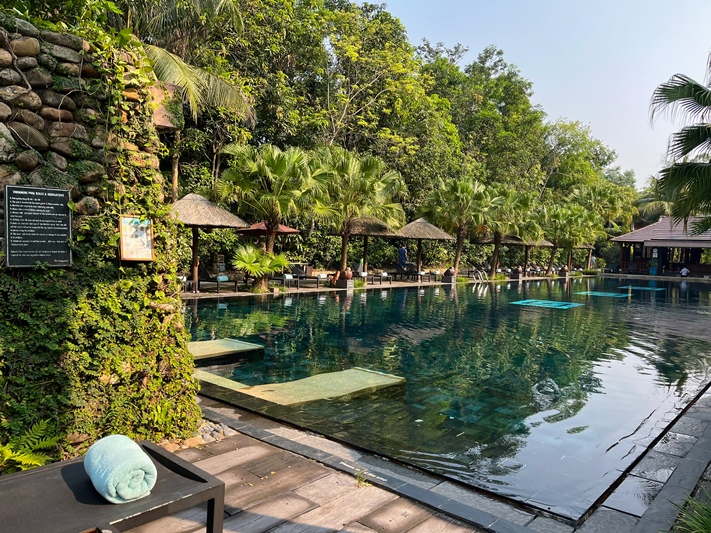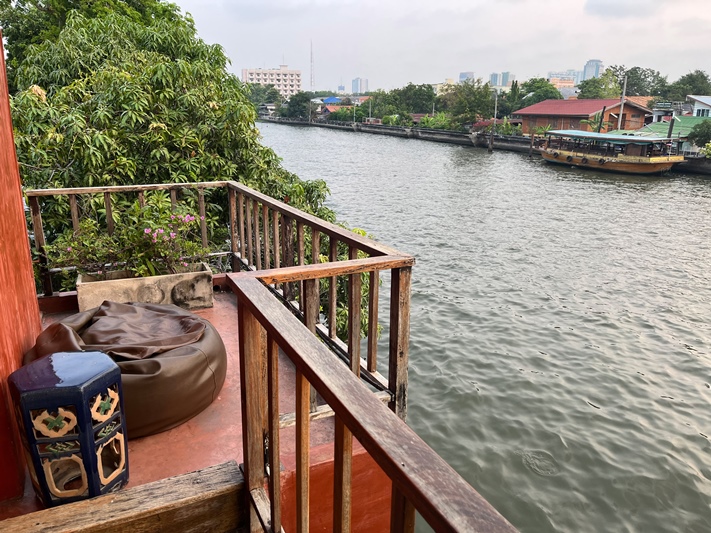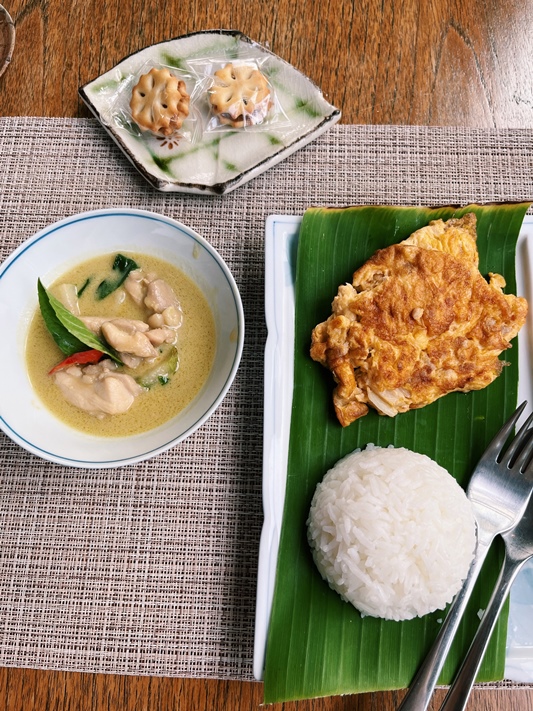Can you still get five-star treatment at two-star prices in Southeast Asia? I went to Thailand and Vietnam to fact-check the old myth.
THE WASHINGTON POST – There’s a popular refrain Western travellers repeat about Southeast Asia, “The flight’s expensive, but once you get there everything’s cheap.” You can find ‘White Lotus’ luxuries for Holiday Inn prices, they said.
When I moved to Bangkok in 2014, I learnt quickly that wasn’t the whole story, and I had a dwindling savings account to prove it.
Yes, you could get street food for USD1 and massages for less than USD10. And you could also blow money eating, and travelling like anywhere else.
But Southeast Asia’s reputation of luxury for less is not necessarily a myth, particularly when comparing it to other popular destinations. In January, average nightly hotel rates were USD126 in Bangkok, according to STR, a hospitality data and analytics company, lower than USD151 in London, USD391 in Hawaii and USD145 in Tokyo.

Unlike in those other locales, “in most parts of Thailand, USD100 a night is going to get you something really, really nice”, said Robert Sukrachand, a furniture designer who splits his time between Chiang Mai, Thailand, and New York.
Myriad factors contribute to lower prices in the region, such as how far the dollar goes, labour costs and the lower cost of living in most of Southeast Asia compared with the United States (US). And like many other tourist-heavy destinations, what’s a deal for Western tourists could be out of reach for many locals.
To find deals, Sukrachand said you’ll have to do some research on local favourites and price standards. Having a baseline of what things cost is helpful to get the most value out of your trip. Finding lower prices usually means getting away from the well-trodden tourist paths of Phnom Penh or Penang, and skipping the tuk-tuks closest to the
popular temples.
IF YOU WANT TO SAVE ON HOTELS, LOOK FOR A BOUTIQUE PROPERTY
On a recent trip to Las Vegas, my off-the-Strip hotel room with a Murphy bed cost USD185 per night. A month before that, I paid USD134 for a motel off the freeway in Iowa. For USD10 less than my Iowa rate, I got a suite with a living room and two balconies overlooking a canal at the Siamotif Boutique Hotel in Bangkok.
I followed the advice of Katie Carew, a luxury travel adviser with the Travel Edge Network, who told me local brands offered better deal than international ones. I ended up at Siamotif, a traditional Thai wooden house with seven guest rooms, each with its own name and unique design. Technically, it was a three-star property but had a “superb” rating on Booking.com. Every morning, my complimentary breakfast was made from scratch; a Thai omelette with red curry and chicken one day, nam prik ong with rice and vegetables the next.
When it comes to hotels in Bangkok, it’s a buyers market. The country has an oversupply of traveller accommodations, and the hotel industry is continuing to expand, according to an analysis from Krungsri Thai bank.

I could have found less-expensive hotels, even ones in the centre of the city or in sleek high-rise buildings with sweeping views. More expensive options can be found closer to tourist hot spots – just like prices rise the closer you get to the Eiffel Tower in Paris or the beach in Waikiki – or with international brands.
“Whether you are in New York City or Switzerland or Vietnam, the highest level hotel is pretty much the same price across the world,” Carew said.
In Vietnam, I wanted to splurge in between overnight train rides from Ho Chi Minh City to Hanoi. I could go all out at Vedanā Lagoon Resort & Spa near Danang, where overwater villas ran just over USD200 per night. Instead of faking a honeymoon, I went to their sister property, the Pilgrimage Village Boutique Resort & Spa in Hue.
At check-in, staff gave me a little tapioca and banana dessert, a cup of ginger tea and a frozen hand towel. My ‘Deluxe Double’ room – a short walk away from the pool and swim-up bar – was USD96 and came with a buffet breakfast, morning tai chi and yoga, and a 30-minute spa voucher.
I did get burned by a few local hotels’ misleading photos and descriptions. In Phuket, my USD76-per-night “boutique hotel” turned out to be a dank cement cube with a hard bed – and not in a chic minimalist way. And in Hanoi, my USD30 hotel “Superior room” didn’t have a window and was so small I could barely open
the door. Khoa Nguyen, who co-owns the Vietnam travel company In Country Tours with his wife, Michelle, said luxury hotels have been faring better since the pandemic than others. “Many of the two, three, four-star hotels are not up to standard yet,” Nguyen said. “The five-stars are more reliable.”

SEEK OUT SELF CARE WHERE LOCALS GO
Wellness is a cornerstone of tourism in Southeast Asia, but it’s not just for tourists. “Massage is not really a luxury in Thailand,” Sukrachand said. “It’s something that people all over the country – even in rural areas – have built into their culture.”
I had afternoon massages in Bangkok and Phuket to help with jet lag and recover from full days of walking. Instead of going to luxury hotels where rates were close to those I’d find at home in DC, I went with smaller places that catered to both locals and tourists. I paid USD5 for a 30-minute foot massage, USD8 for an hour-long massage and USD55 full-body oil massage at a more upscale spa in a private room.
The further from tourist areas, the better the rates. At a market between a college and a hospital, I got an USD18 manicure and pedicure that was so perfect, I had to leave a review.
In Vietnam, I needed a different kind of spa after nearly two weeks of dining out and sweating on the backs of motorbikes in humid cities. To address my acne flare-up, I searched Google Maps for ‘medical spa’ in Hanoi and found a same-day appointment to see a dermatologist. For USD21, I had a consultation with the doctor, was given an hour-long treatment from a nurse practitioner who steamed and massaged my face, performed some pore extractions, applied a thick goopy peel-off mask and finished with LED light therapy.
WORLD-CLASS DINING FOR A MIDRANGE BILL
I landed in Vietnam ready to eat, particularly in Ho Chi Minh City. Vietnamese American writer Dan Dao, who’s based there, noted the only place on Asia’s 50 Best Restaurants list in Vietnam is based in the city.
That restaurant is Anan, where the 10-course tasting menu costs USD100 – a fraction of the USD425, 10-course tasting menu at another 50 Best restaurant, SingleThread Farm in California.
Still, I opted to order from the a la carte menu. My glass bottle of sparkling water, three dishes, tax and service charge totalled USD47, by far my most expensive meal of the trip. I offset that by having a USD2 banh mi lunch the next day. While high-end restaurants cater to wealthy locals, international travellers and expats, Vietnam’s street food and mom-and-pop shops are for everyone, even those who can afford nicer restaurants, Dao said. You’ll find the city’s wealthy eating at inexpensive places “because the quality is simply the best for those kinds of dishes”, he said.
Dao said like in the US, there’s a perception in Vietnam that certain Asian food – like street food – should be cheap, which can be limiting to business owners. But in Vietnam, it can be easier to keep prices down when businesses can operate from home or without a brick-and-mortar shop and “the cost of goods is just lower”, Dao said.
Elaborate tasting menus at the one-Michelin star Nahm cost between USD75 and USD93; my mom and I saved on the bill a few years ago by going for lunch a la carte. At a beachside restaurant in Phuket, I had an amazing plate of fried clams in sweet chilli sauce, a massive yellow crab curry, rice and a beverage for USD22. At the Thai place across the street from my apartment in DC, curries start at USD16.
PRIVATE TOURS AREN’T JUST FOR WEALTHY TOURISTS
Sukrachand told me that in Thailand, “some of the best food is some of the least expensive food, but… without somebody showing you around, you’re not necessarily going to find it”. It was a good reminder to book some food tours on my trip. For USD25, I joined a group tour in Hanoi and ate delicious food at seven places that I would have never found on my own. For USD65, I booked a half-day private excursion in Hue with Nguyen’s In Country Tours. The extra USD40 made the experience feel above my pay grade.
When the wealthy travel, they don’t do it with the masses. They go private – private villas, private guides and private planes. The average traveller can get a taste of that in Southeast Asia. For USD17, my Bangkok hotel offered to arrange a private airport pickup, the kind where the driver waits in the terminal with your name on a sign and has cold water for you in the car. For USD23, I took a Muay Thai class in Phuket with private instruction. My private tour in Hue was USD65 and included transportation to and from my hotel, plus dining at places where Anthony Bourdain ate. I didn’t feel like a tourist; I felt like a celebrity with a fixer.
All of these cost more than the lowest-priced options, but paying a little more went so much further. – Natalie B Compton


